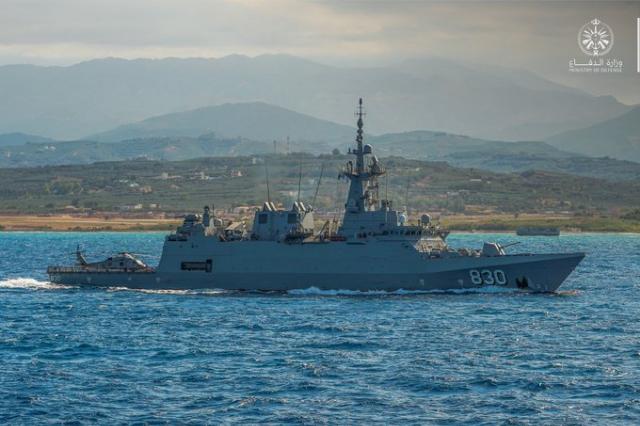On October 29, 2024, the Ministry of Defense of Saudi Arabia signed an intergovernmental contract with the Ministry of Defense of Spain for the construction of three more large corvettes of the Spanish Avante 2200 project for the Saudi Navy as part of the so-called second stage of the Saudi Al Sarawat program, in addition to the five corvettes already built under the first stage of the Al Sarawat program. The construction of three new ships, as well as the previous five, will be carried out by the Spanish shipbuilding association Navantia. The contract parameters are not disclosed.

The Spanish-built corvette Al Diriyah of the Avante 2200 project of the Saudi Arabian Navy (c) The Ministry of Defense of Saudi Arabia
Navantia signed the first contracts totaling more than 2.5 billion euros for the construction of the first five Avante 2200 corvettes for the Saudi Arabian Navy under the Al Sarawat program in April 2018. The contracts also provided for full technical support of the life cycle for five years from the date of delivery of the first ship, with an option for five years. In monetary terms, this became the largest export contract in the history of the Spanish shipbuilding industry.
The construction of the corvettes was carried out at Navantia's San Fernando facility in Cadiz. The ceremony of the start of construction (the first steel cutting) of the lead corvette Al Jubail (tail number "828") was [...] held there on January 15, 2019. The lead ship Al Jubail was launched on July 22, 2020 and entered factory sea trials on September 5, 2021, and was transferred to the Saudi Navy in Cadiz on March 31, 2022.
The second corvette Al Diriyah (tail number "830") was handed over to the Saudi Navy on July 26, 2022, the third corvette ḤA'il (tail number "832") was handed over on December 4, 2022, the fourth Jazan (tail number "834") was handed over on December 4, 2023, and the fifth Unayzah (tail number "836") - March 7, 2024. The corvettes were named after Saudi cities.
The Saudi military Industrial association Saudi Arabian Military Industries (SAMI), within the framework of the Al Sarawat program, has created a joint venture with Navantia SAMI Navantia in Saudi Jeddah, whose task is to partially localize in Saudi Arabia a number of electronic weapons systems for these corvettes, as well as its installation and integration on these ships and other promising ones ships and boats of the Saudi navy. Accordingly, the fourth and fifth corvettes Jazan and Unayzah, after launching in Cadiz, were transported on transport ships to Jeddah in 2021-2022, where they were completed, integrated, manned and tested and where they were transferred to the Saudi navy. The construction of three additional corvettes of this type, which have now been ordered, will probably be carried out according to the same scheme. The SAMI Navantia joint venture will also provide technical support and repairs to the corvettes while they are in the Saudi Arabian Navy.
Earlier in 2008-2012, Navantia had already built four patrol ships of the Avante 2200 (POVZEE) project for the Venezuelan Navy (type Guaiquerí). Unlike the Venezuelan ships, the corvettes of the modification of this project for the Saudi Arabian Navy are more powerfully armed multifunctional ships. The total displacement of the Saudi corvettes is about 2,800 tons, the maximum hull length is 104.2 m, width is 14.4 m, draft is 4.3 m. A two-shaft diesel power plant with four MTU diesel engines provides a full speed of up to 27 knots. The cruising range is 5,000 miles at a speed of 15 knots. The crew is 102 people, the autonomy is 21 days.
The armament of the Saudi ships consists of two four-container launchers of MBDA Exocet MM40 Block 3 anti-ship missiles, a 16-charge vertical launcher of the MBDA VL MICA NG anti-aircraft missile system, a 76-mm Leonardo Oto Super Rapid universal artillery installation, a 35-mm Rheinmetall Oerlikon Millenium anti-aircraft artillery complex, two 20-mm remotely controlled Nexter artillery installations Narwhal, four 12.7mm machine guns, two three-tube 324 mm Mk 32 torpedo tubes. A 10-ton class helicopter is based in the hangar.
A feature of the Saudi project was the widespread use of electronic systems developed and manufactured by Navantia itself - the CATIZ ACS, the HERMESYS communication complex, the DORNA fire control system, the MINERVA "integrated bridge" and the Integrated Platform Control System for shipboard automation. The Hensoldt TRS-4D general detection radar and the Thales-powered and towed GAS are installed.
